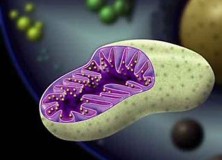
The “energy powerhouses” inside cells, mitochondria must be distributed to cells throughout the body, which is accomplished with the help of small protein “motors” that transport the organelles along axons. For the motors to transport mitochondria, enzymes known as Mitochondrial Rho (Miro1) GTPases act to attach mitochondria to the motors. To study how the movement of mitochondria is related to motor neuron disease, Tammy T. Nguyen, from the University of Utah School of Medicine (Utah, USA), and colleagues developed two mouse models in which the gene that makes Miro1 was knocked out. In one model, mice lacked Miro1 during the embryonic stage. A second model lacked the enzyme in the cerebral cortex, spinal cord and hippocampus. The researchers observed that mice lacking Miro1 during the embryonic stage had motor neuron defects that prevented them from taking a single breath once born. After examining the mice, Nguyen, Shaw and their colleagues discovered that neurons required for breathing after birth were missing from the upper half of the mice’s brain stems. The phrenic nerve, also important for breathing, was not fully developed, either. Conversely, the mice without Miro1 in their brain and spinal cord were fine at birth but soon developed signs of neurological problems, such as hunched spines and difficulty moving and clasping their hind paws together – symptoms similar to motor neuron disease, and died around 35 days after birth. The study authors submit that: “Our findings indicate that defects in mitochondrial motility and distribution are sufficient to cause neurological disease.”
Nguyen TT, Oh SS, Weaver D, Lewandowska A, Maxfield D, Shaw JM, et al. “Loss of Miro1-directed mitochondrial movement results in a novel murine model for neuron disease.” Proc Natl Acad Sci U S A. 2014 Sep 2;111(35):E3631-40.


